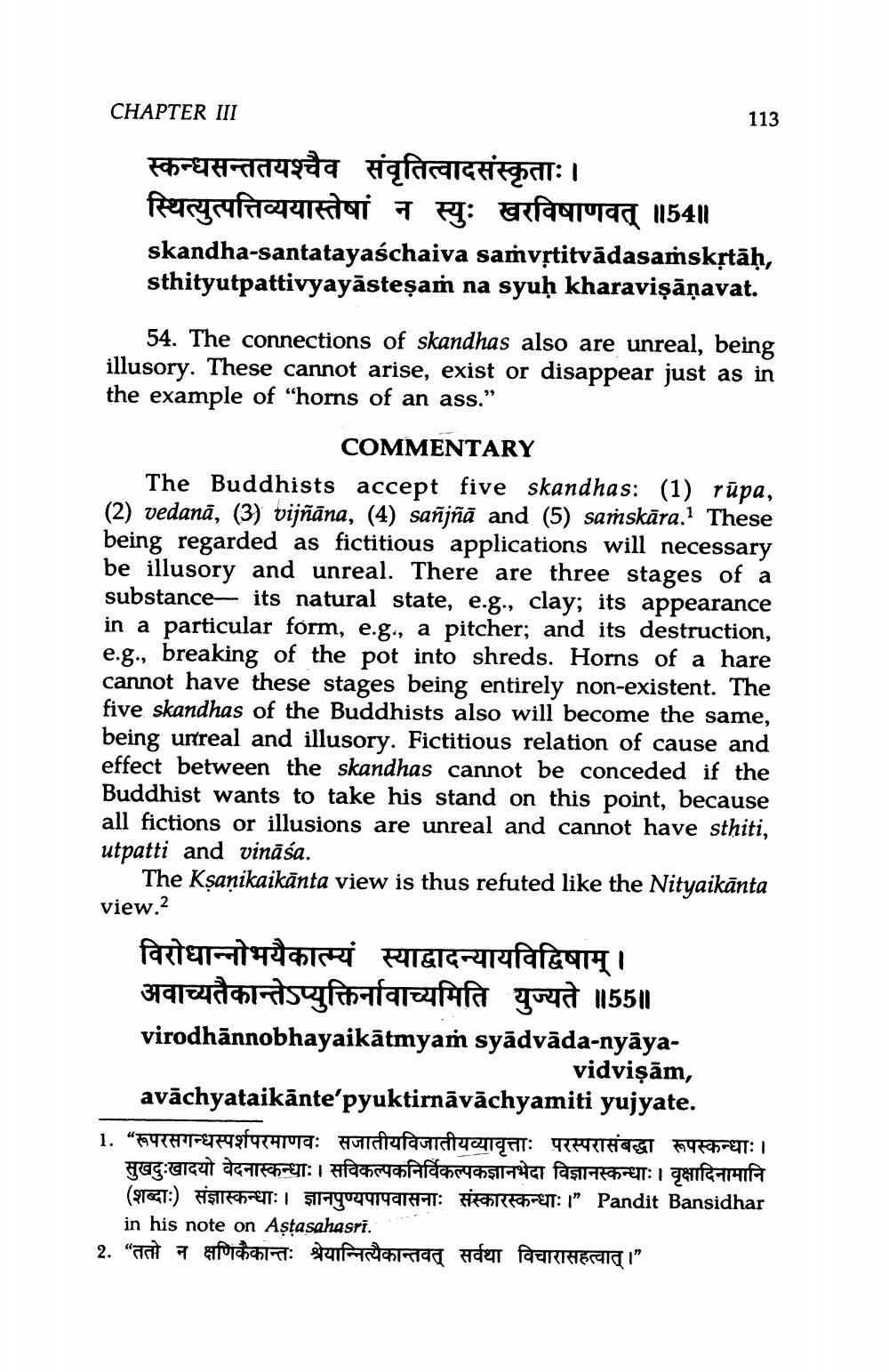________________
CHAPTER III
113
स्कन्धसन्ततयश्चैव संवृतित्वादसंस्कृताः। स्थित्युत्पत्तिव्ययास्तेषां न स्युः खरविषाणवत् ॥54॥ skandha-santatayaśchaiva samvștitvādasaṁskřtāḥ, sthityutpattivyayāsteṣam na syuḥ kharavişāņavat.
54. The connections of skandhas also are unreal, being illusory. These cannot arise, exist or disappear just as in the example of "horns of an ass.”
COMMENTARY The Buddhists accept five skandhas: (1) rūpa, (2) vedanā, (3) vijnana, (4) sanjna and (5) samskāra.1 These being regarded as fictitious applications will necessary be illusory and unreal. There are three stages of a substance- its natural state, e.g., clay; its appearance in a particular form, e.g., a pitcher; and its destruction, e.g., breaking of the pot into shreds. Horns of a hare cannot have these stages being entirely non-existent. The five skandhas of the Buddhists also will become the same, being unreal and illusory. Fictitious relation of cause and effect between the skandhas cannot be conceded if the Buddhist wants to take his stand on this point, because all fictions or illusions are unreal and cannot have sthiti, utpatti and vināśa.
The Ksaņikaikānta view is thus refuted like the Nityaikānta view.2 विरोधान्नोभयैकात्म्यं स्याद्वादन्यायविद्विषाम् । अवाच्यतैकान्तेऽप्युक्ति वाच्यमिति युज्यते ॥55॥ virodhānnobhayaikātmyaṁ syādvāda-nyāya
___vidvisām, avāchyataikānte'pyuktirnāvāchyamiti yujyate. 1. “रूपरसगन्धस्पर्शपरमाणवः सजातीयविजातीयव्यावृत्ताः परस्परासंबद्धा रूपस्कन्धाः।
सुखदुःखादयो वेदनास्कन्धाः । सविकल्पकनिर्विकल्पकज्ञानभेदा विज्ञानस्कन्धाः । वृक्षादिनामानि (शब्दाः) संज्ञास्कन्धाः। ज्ञानपुण्यपापवासनाः संस्कारस्कन्धाः।" Pandit Bansidhar
in his note on Aştasahasri. 2. “ततो न क्षणिकैकान्तः श्रेयान्नित्यैकान्तवत् सर्वथा विचारासहत्वात्।"




